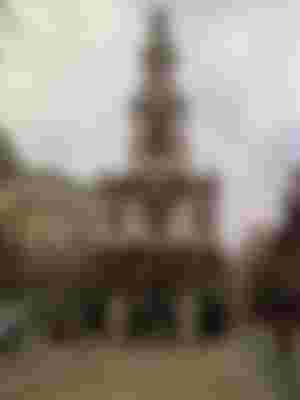Stuart London

We can pretty well tell what London looked like at the time of the Restoration, from the appearance of certain old houses still with us; viz. No. 17, Fleet Street, opposite Chancery Lane; the old tenements in Holywell Street and Wych Street, Strand, especially the Rising Sun Tavern in the latter; the fine timbered and gabled buildings in High Holborn, opposite Gray's Inn Road; and some that still linger in Cloth Fair, Smithfield.
(No. 17, Fleet Street was built in the reign of James I for Henry, Prince of Wales, in his capacity of an officer of the Duchy of Cornwall. It is a fine specimen of the architecture of the period, and has been preserved by the Court of Common Council from the demolition threatened during the widening of the street. In the last century it was noted as Nando's coffee-house.)
Transplant to town the Chester "Rows," the ancient wooden houses from Sandwich, Canterbury, Ipswich, Norwich, King's Lynn, Nantwich, Exeter, Dartmouth, Hereford, Coventry, and Warwick - and London under the Stuarts is before us.
Often during his exile, Charles II must have contrasted it with some of the dull towns in France and Holland, wherein he was compelled to live, and which, no doubt, made him appreciate all the more keenly, the wealth of form and colour in his native city when he returned to it on that memorable 29th of May 1660.
Landing at Dover after a hearty breakfast on board ship of, we are told, "pease and pork, and boiled beef," he made his triumphant entry into London, by way of Canterbury, Rochester, and Blackheath.
All along the route, the preponderance of the radiant female beauty which he admired only too well, was remarkable.
But to an artistic eye, not less attractive was the setting of the lovely human picture; tapestries, Turkey carpets, and rich stuffs of damask hung from the windows, while the houses in themselves were pleasant and soothing to look upon, their outlines satisfying the subtle craving for repose in architecture.
Passing St. Saviour's, Southwark, with its lofty embattled tower, the King crossed old London Bridge, whence through the gap in the line of stately houses that covered it, he could see the ships in the Upper Pool covered with gay streamers, and catch a glimpse of the Tower enveloped in the smoke of ordnance shot off in his honour.
Leaving, on the right, Sir Thomas Gresham's Royal Exchange, the splendid procession, pausing for a few moments while the Lord Mayor offered the city's congratulations, slowly made its way towards Cheapside and St. Paul's.
Near the Poultry, the Great Conduit flowed with good red wine.
Next came the old Mercers' Hall, and, on the left, Bow Church, its pinnacled spire fitted with beacon lanterns for the guidance of belated travellers.
Right and left in the "Chepe," the shops of goldsmiths, haberdashers, and drapers, with their curious signboards swinging in the breeze, and the taverns overhung with the appropriate symbol of clustering bushes of May-blossom, produced a striking pictorial effect.
Onward by the great cathedral, in decay, and lacking its lofty steeple, yet in spite of this and of Inigo Jones' incongruous portico, a noble specimen of severe Gothic; down Ludgate Hill and through the ancient gate at the bottom, with its statues of King Lud and Queen Elizabeth, into the Strand, then, even more pronouncedly than now, the most striking thoroughfare in London.
On the south were noble mansions with gardens reaching to the river side; on the north was comparatively open country, and from the Bar (a timber house built across the street and marking the city boundary) to the Savoy, the houses became more and more detached.
On the left, Somerset Place, Durham House, the Savoy, and Northumberland House near Charing Cross, were the chief palaces.
In the roadway stood St. Clement's, old, and sadly in need of repair; and St. Ursula of the Strand, a very ancient church, built almost on the site of the great Maypole.
Further on, northwards, stood Bedford House, and Inigo Jones' newly-built church of St. Paul's, Covent Garden, together with the lofty houses and arcades overlooking the market area; while close by was the village of St. Giles and St. Martin's, literally "in the fields."
On, past the village of Charing and the spot whereon had stood the beautiful Eleanor's Cross, went the noble cavalcade, the Abbey in sight across the meadows, isolated but looking much as it does now, minus the west front and towers.
And so to the palace of Whitehall in the midst of extensive gardens, with its tilt-yard opposite, its tennis-court, bowling-alley and cockpit, and, most impressive of all, its splendid Banqueting House.
Here the Royal progress of seven long hours came to an end, and the King enjoyed his own again.
Carolean London was picturesque, but dirty.
Its streets were narrow and ill-paved; it was villainously lighted, or, rather, was not lighted at all; and, according to modern ideas, it was shockingly insanitary.
With the Restoration, had stalked unseen the "pale horse" of pestilence and death; but the cleansing baptism of a mighty conflagration was soon to fall upon the doomed city.
(From Imperial London, by Arthur Henry Beavan, 1901)
